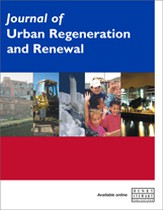Indifferent coexistence in Dortmund-Hörde : How upper-middle-class newcomers and long-established working-class residents live side by side in a neighbourhood of contrasts
Abstract
Attracting middle-class residents to disadvantaged neighbourhoods is still widely accepted and promoted as a strategy in urban regeneration by urban policy and planning professionals, even though the strategy has often been criticised for promoting the gentrification of these areas. In the traditional working-class district of Hörde in Dortmund, Germany, a closed-down steel mill has been replaced by a luxurious new housing development around an artificial lake. This paper proposes that the planned influx of upper-middle-class newcomers to this area has caused a spatial and social divide in the neighbourhood. The paper examines how winners and losers of structural change live side by side. It shows that interaction between newcomers and long-established working-class residents is extremely rare. Newcomers feel uncomfortable at being an affluent minority in a poor neighbourhood and withdraw into their private spheres around Lake Phoenix. Long-established residents, on the other hand, criticise the newcomers’ lack of interest in engaging with the neighbourhood. They have ambivalent feelings towards the transformation: even though they welcome Lake Phoenix as a project that improves environmental quality and the image of their neighbourhood, it makes them aware of their own social marginalisation. It is argued that this ambivalence prevents open conflicts between long-established residents and newcomers but at the same time increases social distance between the two groups. The findings from the Hörde case study support the thesis that middle-class-oriented urban regeneration leads to small-scale segregation instead of actual social mixing. Furthermore, this paper stresses the importance of the participative planning approach in the urban regeneration process to enable acceptance by the established community and identification with new-build developments.
The full article is available to subscribers to the journal.
Author's Biography
Verena Gerwinat holds an MSc in spatial planning and is a research associate at TU Dortmund University. Her research interests include the processes of gentrification and segregation, especially in older industrial cities.
